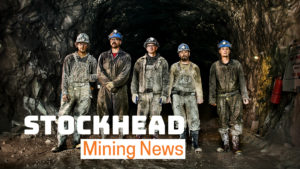How Tando Resources will benefit as vanadium batteries take the spotlight

Pic: Bloomberg Creative / Bloomberg Creative Photos via Getty Images
Vanadium is the metal of the moment because it is a key component in a new style of battery — one that could displace lithium-ion in certain settings.
While lithium batteries have enjoyed a first-mover, economies-of-scale advantage, vanadium redox flow batteries (VFRBs) are carving out their own market in off-grid, deep-power cycle applications worldwide.
At the moment, about 90 per cent of global vanadium production is used to make high-strength steel. But future demand stems from its role in vanadium batteries, which can store more power and last much longer than lithium batteries.
Already the price of vanadium has rocketed 550 per cent in the past three years which is why miners such as Tando Resources (ASX:TNO) are positioning themselves as suppliers.

The advantages that come from supplying the next hot battery field are clear.
In March, Tando got its hands on a high-grade vanadium project in South Africa estimated to host a resource three times bigger than similar projects.
Since then its share price is up 83 per cent.
Tando’s managing director Bill Oliver says vanadium batteies are a key part of the energy storage story. As supply is constricted — it’s usually mined as a byproduct of other minerals such as titanium magnetite in China, Russia and South Africa — anyone with access to a good deposit will be able to tap into that story.
New demand
Projections estimate new demand of 300,000 tonnes of vanadium coming online over the next few years because of VRFBs – more than three times what is currently produced.
To put that in a battery context, 145 grams of vanadium pentoxide per litre is needed to make a VRFB.
For a 1.6MWh battery you’d need 15 tonnes — hence the shortage fears.
In China, Rongke Power in Dalian province is building the largest battery in the world.
It’s a 800MWh VRFB and will need about 7000 tonnes of vanadium pentoxide.

Already grid scale VRFBs have been deployed in California, Washington, Hawaii, Singapore, and Japan which has had a 60MWh VRFB in operation since 2015.
In Australia, companies are marketing to off-grid sites such as mining operations, telcos looking to power off-grid communications towers, and even, though they’re competing with cheaper lithium-ion batteries, to residential buyers.
Mr Oliver sees the key end users as being countries who are importing their energy, so they lose it if they don’t use it, or consumers reliant on energy sources that are being depleted or are polluting, such as fossil fuels.
“We’re talking about industrialised areas that can’t afford to have a power interruption — consumers who are keen not just for a renewable solutions but for one that is also a consistent, reliable energy supply,” he said.
“We are seeing a lot of investment in renewable photovoltaic and solar technologies as this technology can now compete with base load power on a kw/h basis.
“The next phase in the energy revolution is for the storage component to keep pace with this switch. The sun doesn’t always shine and the wind doesn’t always blow. The best platform to store that energy for grid scale power over the long term is VFRB technologies.”
Australian story
VRFBs are largely an Australian innovation.
While the concept has been around since the 1930s, the first successful demo of a VRFB was by University of New South Wales professor Maria Skyllas-Kazacos.
The battery is made up of two tanks of vanadium pentoxide (V₂O₅) that has been processed into a liquid solution called an electrolyte.
When the electrolyte is pumped through electro-chemical cells past a proton-exchange membrane, ions are swapped between the negatively and positively charged electrolyte, creating a charge.
Lithium versus vanadium
While lithium batteries receive a lot of attention, they have drawbacks and it’s those gaps which VRFBs are filling.
Lithium batteries degrade if they are discharged below 20 per cent of their capacity and they lose capacity over time. Disposal is also a problem.
VRFBs can keep working for 20 years with little maintenance. They can last at least 25,000 cycles compared to a lithium battery’s 7000 cycles.
And they don’t spontaneously catch fire.
It’s also much easier to adapt VRFBs to industrial applications without adding much more cost — if you need more scale, you just add more liquid.
They are inherently more stable and safer than lithium-ion batteries and the electrolytes can be mixed because they are just positively and negatively charged version of the same chemical.
While lithium has taken the early cost advantage thanks to the huge investment in manufacturing capacity, it’ll take until 2020 when Elon Musk’s gigafactory is online to reduce the cost to $400/kWh.
A VRFB on the other hand can already do it for $500/kWh and that number is forecast to drop to $150.kWh by 2020.
This special report is brought to you by Tando Resources.
This advice has been prepared without taking into account your objectives, financial situation or needs. You should, therefore, consider the appropriateness of the advice, in light of your own objectives, financial situation or needs, before acting on the advice.
If this advice relates to the acquisition, or possible acquisition, of a particular financial product, the recipient should obtain a Product Disclosure Statement (PDS) relating to the product and consider the PDS before making any decision about whether to acquire the product.
UNLOCK INSIGHTS
Discover the untold stories of emerging ASX stocks.
Daily news and expert analysis, it's free to subscribe.
By proceeding, you confirm you understand that we handle personal information in accordance with our Privacy Policy.








